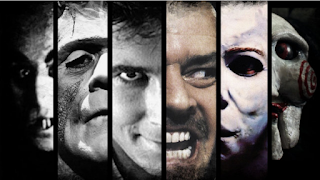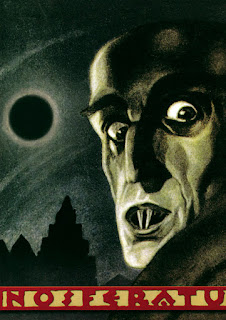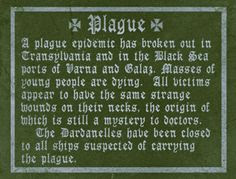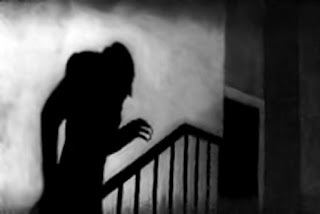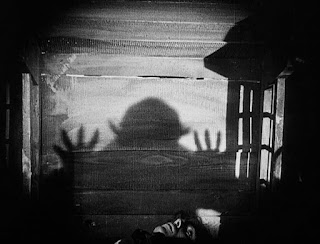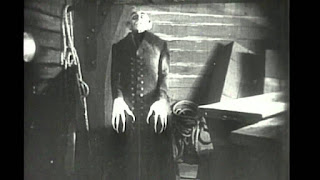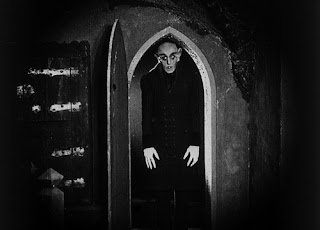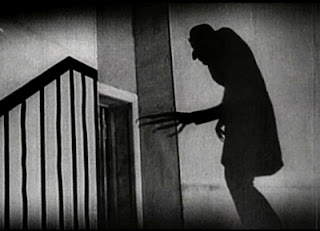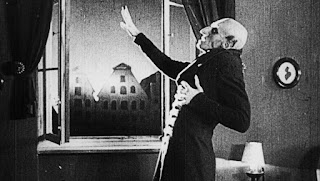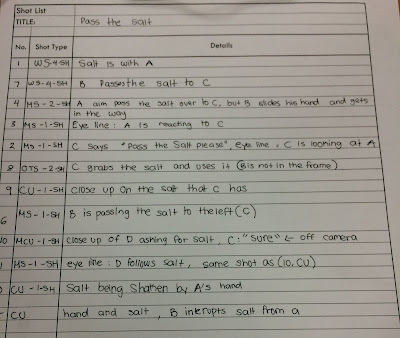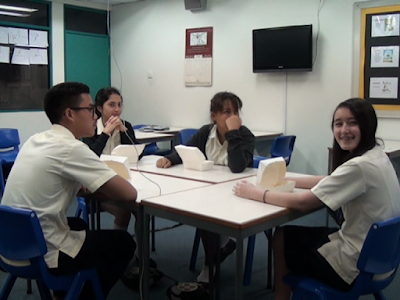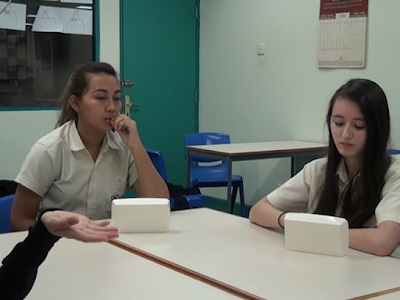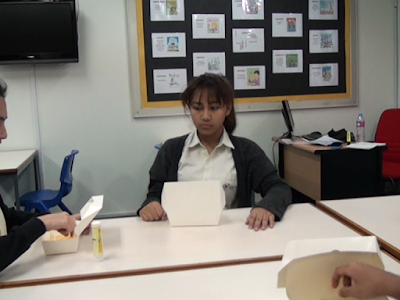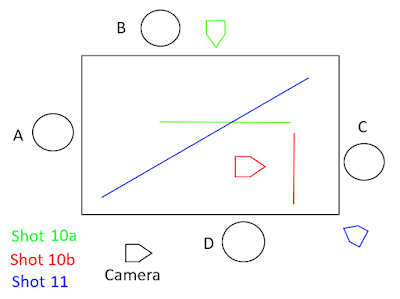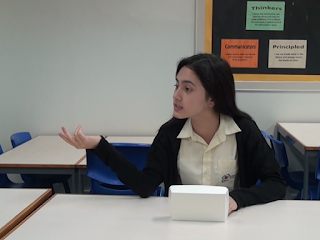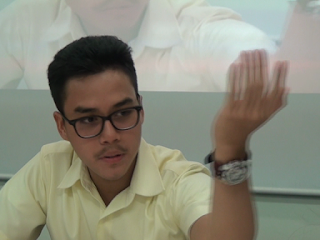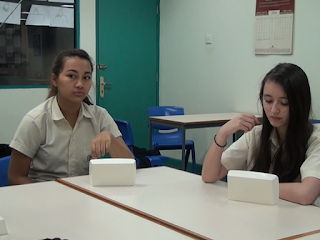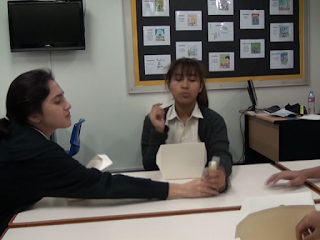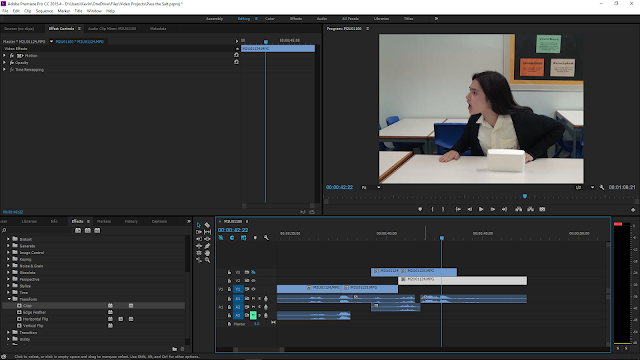The final floor plan for the sister's bedroom scene.
We ended up not following our initial shooting plan at all, and instead based our shoots on availability of actors/actresses since they all had different schedules. We also did not use a shooting script as we were able to memorise how each scene would have played out, and it also allowed us to have more room to improvise each scene on set. However, we did not use slates nor a shot list to sort good takes and bad takes (which in hindsight was a bad idea). Usually though, we would end up choosing the last take. As the editor, there was not much planning I could do other than discussions with the director to ensure the flow of the scenes.
When the day of the shoot came, we arrived on the set, a friend's house, somewhat early in the morning and began setting up the equipment which consisted of one LED light, a tripod and camera (Canon EOS Rebel T6i) , and a boom mic. My principal role in this film is as a cinematographer, and I decided to shoot in 720p at 60fps because based on the resolution of the computers and projectors at school, I didn't think 1080p would have made much of a difference, and 60fps would have given more headroom for things like slow-motion in editing. I already considered converting the framerate to 24fps in post. I also set most of the camera settings to auto to make it easier to do tricky shots. I had a 64GB SD card to store a maximal amount of footage.
The first problem we encountered was that our main and only actor for the scene arrived late since he got lost. Unfortunately, we weren't able to do much until he came. When our actor finally arrived, the director re-briefed him on the scene, and I was given more specific instructions on how to film the scene. It starts with the camera looking at door, until Taylor walks in and we both had to walk straight past each other, camera focusing on him and finally, the camera would look inside the room, towards the wardrobe, from outside of the door. The tricky parts were keeping Taylor's face in frame while having to move past right next to him, moving the camera still attached to the tripod, and landing it smoothly outside, all while keeping the image stable. I tried my best to keep the footage as stable as possible, and it turned out to be good enough, if not we hoped to optimise it a bit more in post.
The "sister's" bedroom, this shot is roughly where the camera should be upon landing.
The reason why we had to attach the tripod while moving was because the director wanted the next part of the scene to consist of jump cuts of Taylor examining different parts of the room, with the camera in the same exact position. The plan for this was to shoot one long take and cut on the action in post. In addition, the position of the LED light was thought up of during the shoot, after a few takes because the lighting was too dark. We actually did not consider using an LED light for this scene.
I started an assemble edit to see if the shots worked or not. Unfortunately, the camera moved a tiny bit between takes and thus the jump cuts weren't as seamless as we had hoped, and we plan on doing a reshoot. However, I applied a stabiliser effect to the moving scene and it looked much smoother without sacrificing the natural look too much.
One noteworthy scene in a later shoot we did involved Taylor walking down a hallway and meeting his friend who's looking at a baby picture of him. We had to cheat the shot because it was not actually a hallway, but a wall.
Taylor walking down the "hall" (from camera left to right)
The actual "hall", perpendicular to where Taylor walks in the scene.
For this scene we used two LEDs in addition to ceiling lights as fill lights to make the scene look more natural. While we planned to reshoot this scene due to a lack of continuity, we may not use it at all because it is too long to fit in the film and the film flows well without it either.
About half of the scenes we shot were handheld, the other half were tripod-held. Of those shots that were handheld, half of them required me to walk. The other half were shot in handheld to increase tension and more precise control over the tracking.
Other noteworthy shots we did were of the father. In two different scenes, we shot him from a low angle to increase tension as well as show that he has a dominant power. One is a shot of him hitting Taylor as a child while the other is of him seeing Taylor holding a doll in the present day.
Taylor's father hitting him as a child
Taylor's father seeing him holding a doll.
Since the scene where Taylor is being hit is a flashback, we gave it a different hue from the rest of the film. The whole flashback scene was given a blueish tint in post to show that it is disconnected from the present, and is an emotional moment for Taylor. Conveniently, the lighting in the room was already somewhat blue in real life, and we used yellow lighting on the LEDs for every other scene.
During the flashback scene, Taylor walks into his parents' bedroom and sees a vision of him as a child. In this scene, the camera moves towards young Taylor's head and fades to black and transitions to a first person view of the father hitting him. While shooting this scene, when the belt hits the floor in front of the camera, I flick the camera upwards or backwards a bit to symbolise the impact.
Then there's the scene where Taylor finds the dress in the wardrobe in his bedroom. We wanted to show this from multiple angles, one of which is from inside the wardrobe. Luckily I managed to fit inside to hold the camera.
Taylor grabbing the dress as seen from the wardrobe.
We didn't light up his face from inside the wardrobe to make it look more natural, but we later realised we should have used a bit of lighting just to make his face more visible because in the final take it ended up being pitch black.
The last scene we shot also happened to be the first scene in the film; the scene where we see Taylor's friends surprising him for his birthday. This scene became vastly different from what we planned and was heavily improvised. In addition, the shooting took place in a different house, however the continuity still worked.
The scene, and therefore the whole film, starts with Taylor opening the front door and his friends come marching loudly in. However, the twist is we shot it from a low angle, only showing the characters' feet. While it was originally done due to a logistical and continuity problem with Taylor's shirt, we realised that it also acted as a great hook. By not showing who the characters are at first, it makes the audience curious as to what they will look like. In addition, it also makes the scene more relatable for the audience, giving it a sort of "day in a life" feeling.
Taylor opens the door only for his friends to just burst in.
We think that this scene works perfectly with the rest of the film. We wanted to show Taylor as a manly but emotionless character, so it fits that his friends are all stereotypical, loud boys who talk about girls and make fun of each other. So, while they are doing all that, Taylor just sits there awkwardly and tries to laugh along. It can also be seen that Taylor doesn't exactly follow his friends' views of fun, as he gets surprised when they supposedly sneaked into his house without him knowing, and questioning the idea of a "treasure hunt" in his own house. This whole scene then contrasts with the rest of the film, being lighthearted and relatable, while everything else is deep and emotional.
In total, we have currently 116 clips before any re-shooting.













